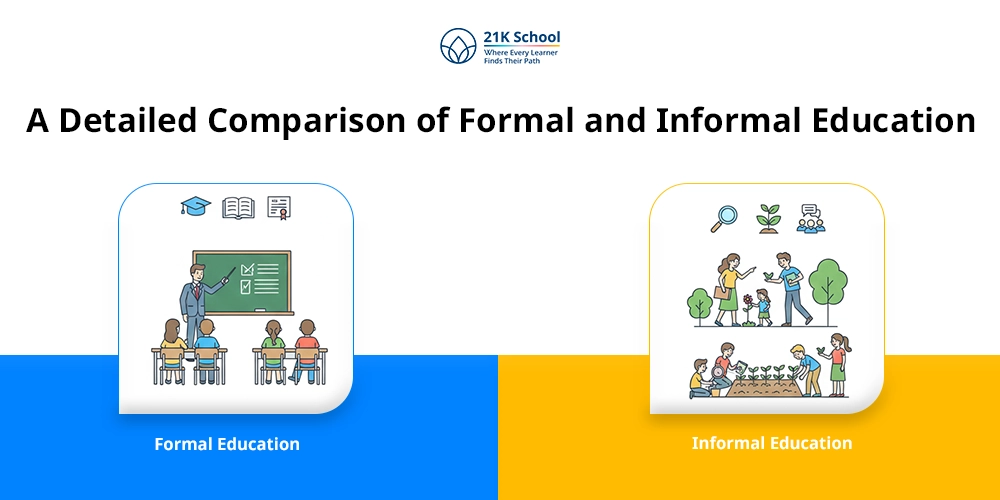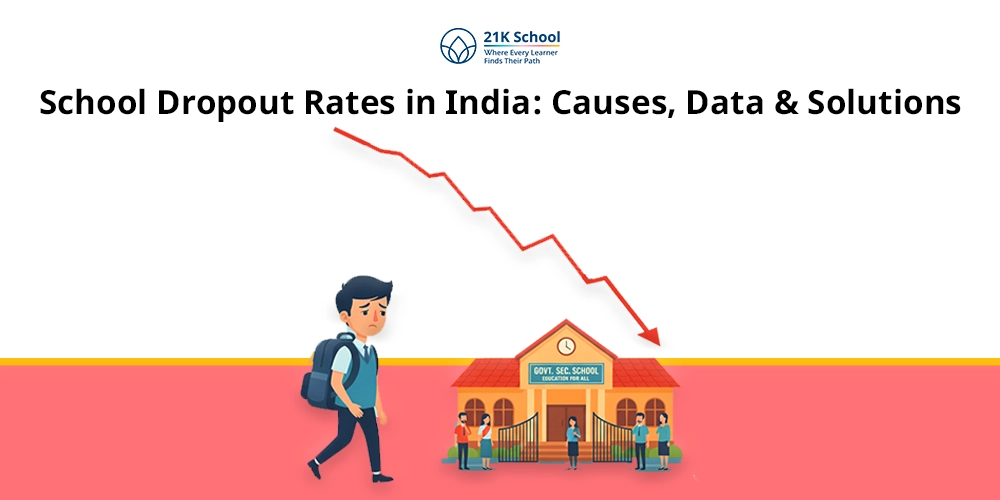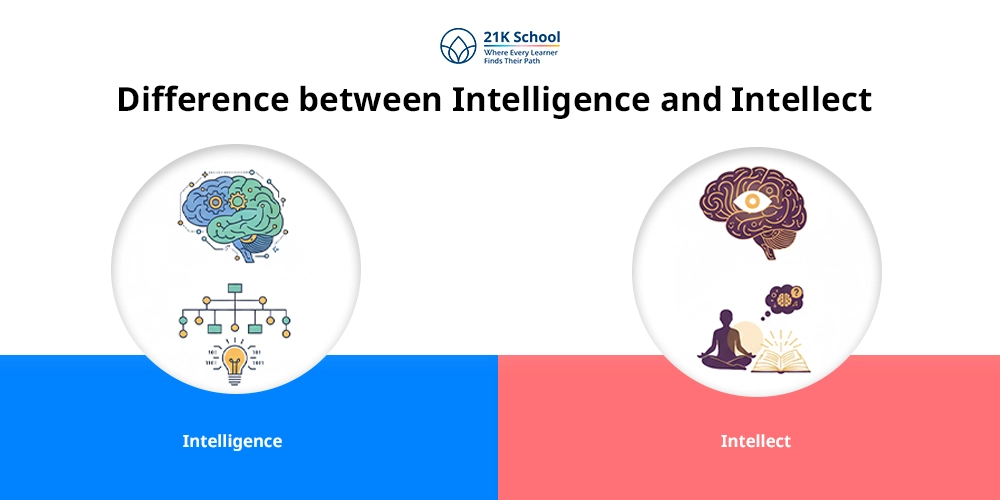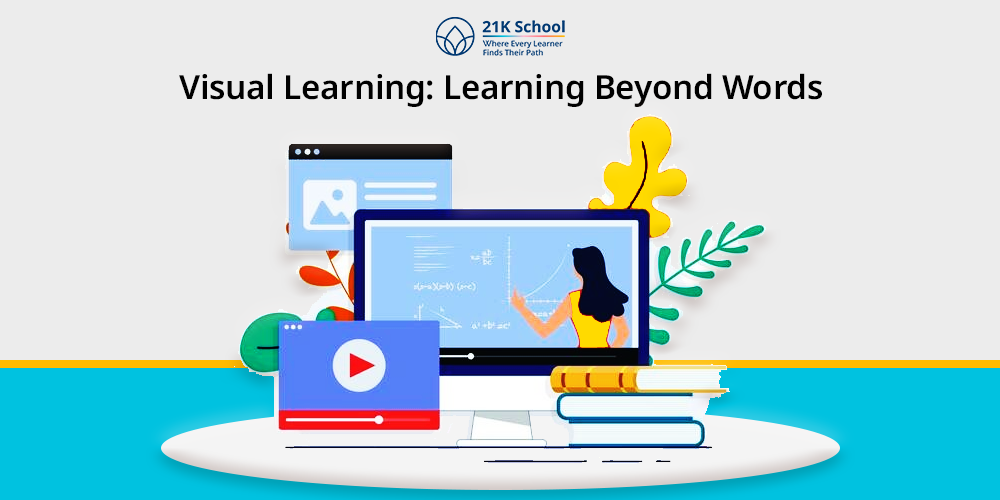
From a roadmap to delivering engaging content to students, visual learning does it all. Learning with visual learning styles and tools, ensures colourful and concrete contents. For the teaching and learning, different techniques and tools are implemented.
With the help of visual learning style, the process of learning and teaching becomes easy. Students learn and retain better when presented with pictures, charts, graphics, videos and animation.
Using a visual learning approach, teachers and students are able to break complex issues and explain clearly. Visual aids boost their learning enthusiasm and understanding power. With the combined learning tools, better comprehensive aids are provided to students of all types.
This blog will give you a complete overview and details about visual learning, meaning, examples, importance, benefits and drawbacks. It also informs about other related details that you need to know about it.
Read more on visual thinking routine .
Table of Contents
What is Visual Learning?
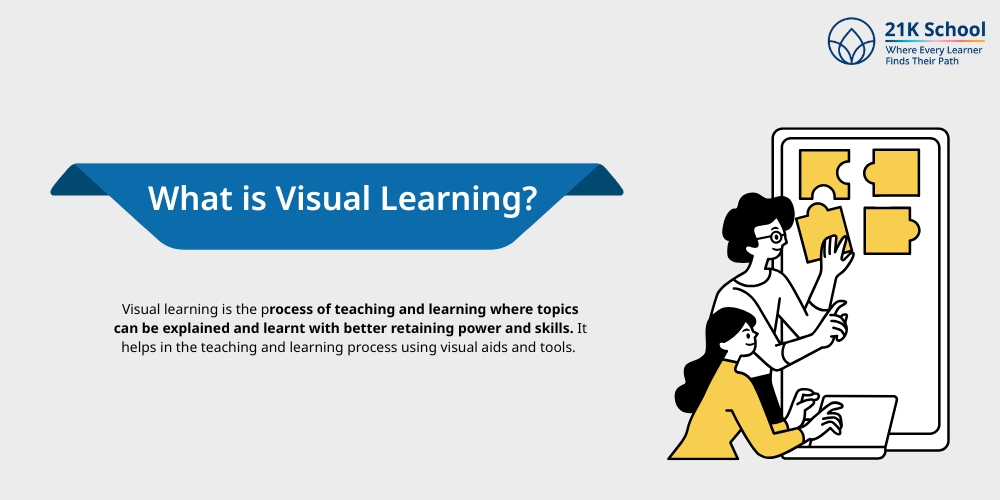
Visual learning is the process of teaching and learning where topics can be explained and learnt with better retaining power and skills. It helps in the teaching and learning process using visual aids and tools.
Instead of rote learning, visual learning allows the use of charts, images, pictures, diagrams, tables or videos. It involves students participation and engagement and fulfill needs of diverse backgrounds.
Visual Learning Examples
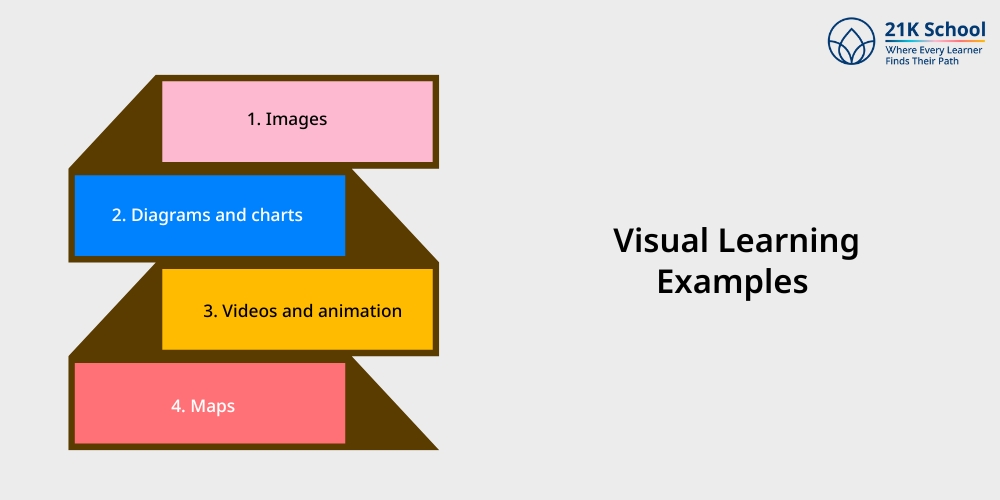
Visual learning can be used across various subjects or topics. Here are some examples of visual learning in order to help you understand better.
1. Images
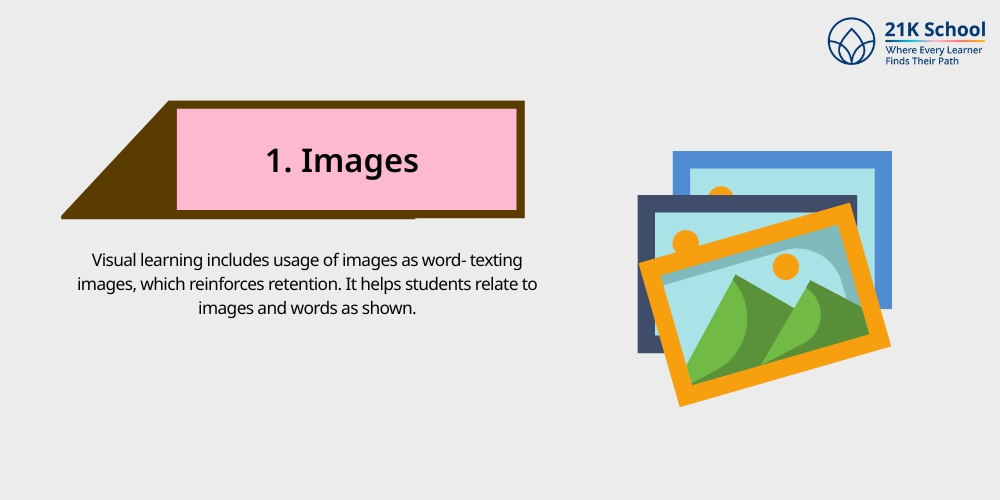
Visual learning includes usage of images as word- texting images, which reinforces retention . It helps students relate to images and words as shown.
Know about student-centred learning .
Example
A teacher explains about an apple to students and uses a picture of an apple for better understanding. Students flashes to what they are reading and what they are seeing in image word- image form.
2. Diagrams and charts
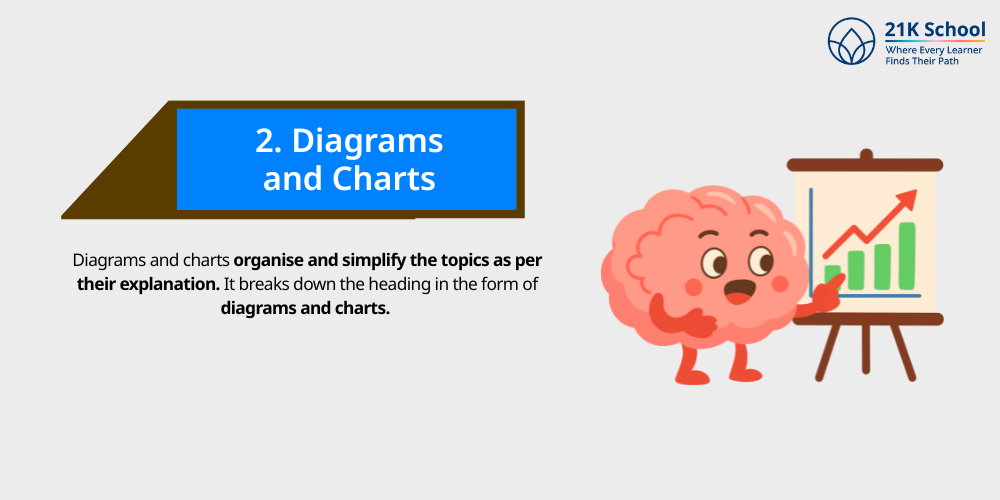
Diagrams and charts organise and simplify the topics as per their explanation. It breaks down the heading in the form of diagrams and charts.
Example
The periodic table from the Chemistry subject. Through diagrams and charts of periodic tables, the teaching and learning becomes easier. It also clearly shows the content which increases the retention of students.
3. Videos and animation
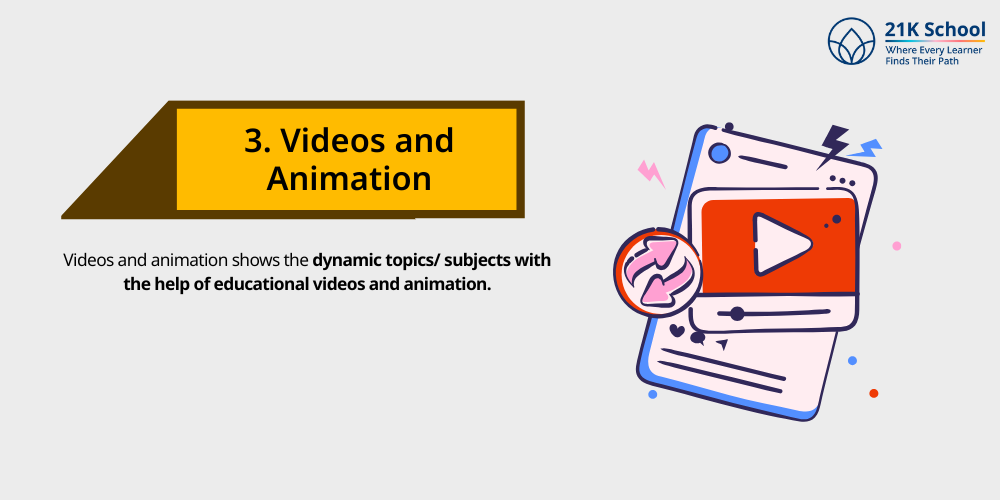
Videos and animation shows the dynamic topics/ subjects with the help of educational videos and animation. It also has backgrounds, sounds and animation figures which resonates better with the students.
Example
The teacher has to explain the solar system and the freedom struggle movement. Through videos and animation, he can show the workings of the solar system and their planets. And freedom struggle stories can be shown in the form of images and video stories, specifying dates and years.
4. Maps
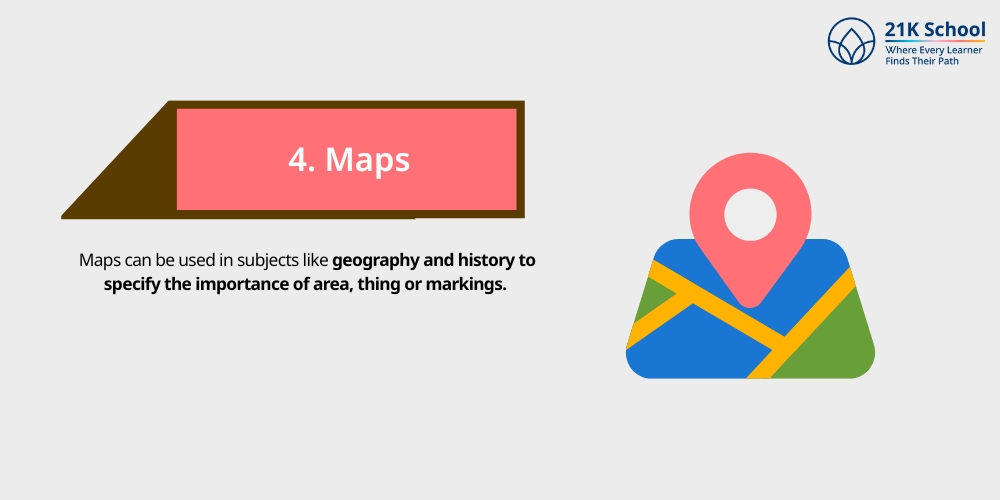
Maps can be used in subjects like geography and history to specify the importance of area, thing or markings. It helps students in retention of knowledge.
Example
A geography teacher has to explain about soil. With maps, teachers can specify different types of soil found and in which parts of the country.
Importance of Visual Learning in the classroom
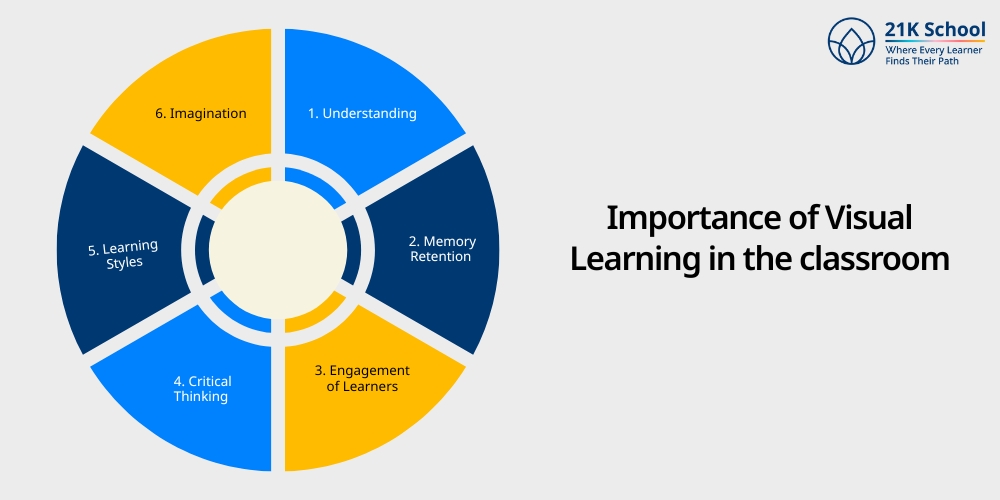
Visual learning plays a crucial role in learning and simplified explanations with the help of different methods. Here the importance of visual learning which boosts engagement and participation of students.
1. Understanding
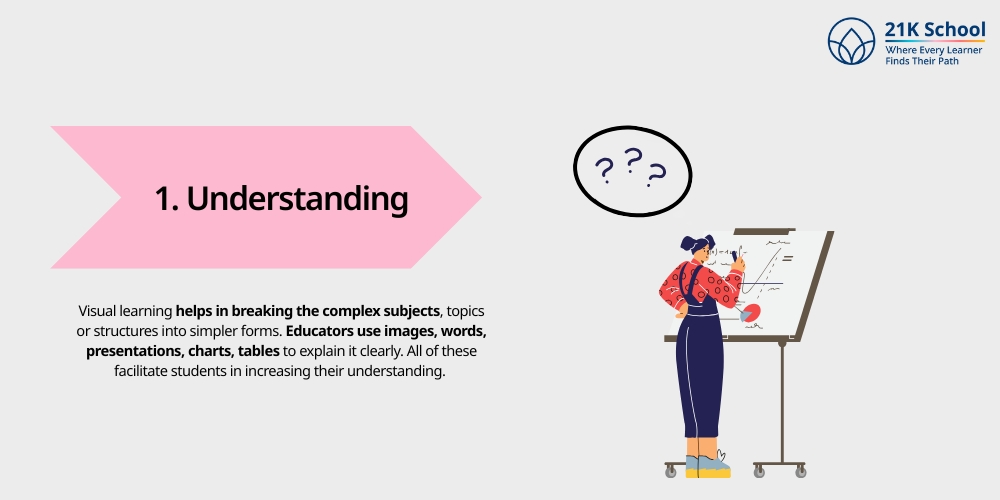
Visual learning helps in understanding the concept by breaking complex topics. Using visual tools increases the understanding of students and their retention. It also helps to relate to the topics in a quick way.
Read about: stress management for students .
2. Memory Retention
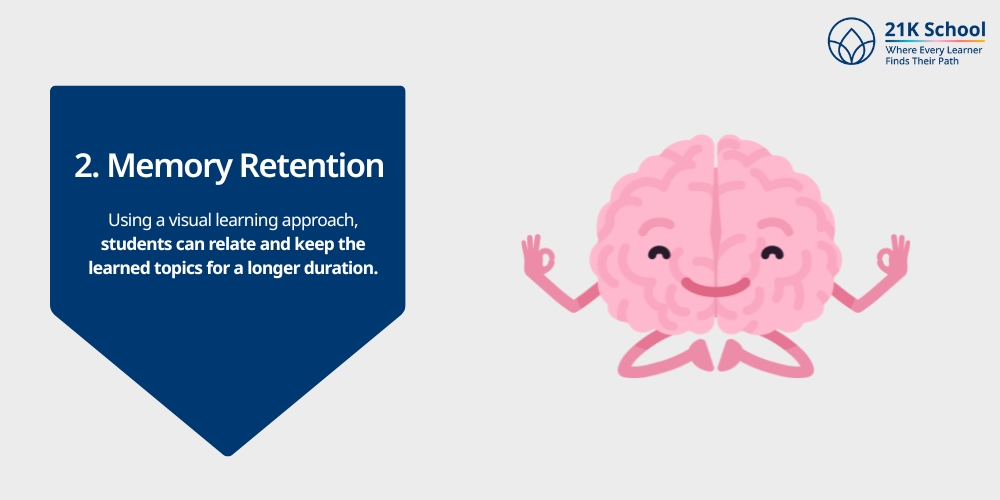
Using a visual learning approach, students can relate and keep the learned topics for a longer duration. Memory retention increases with the use of visual learning aids such as diagrams, figures and charts.
3. Engagement of Learners
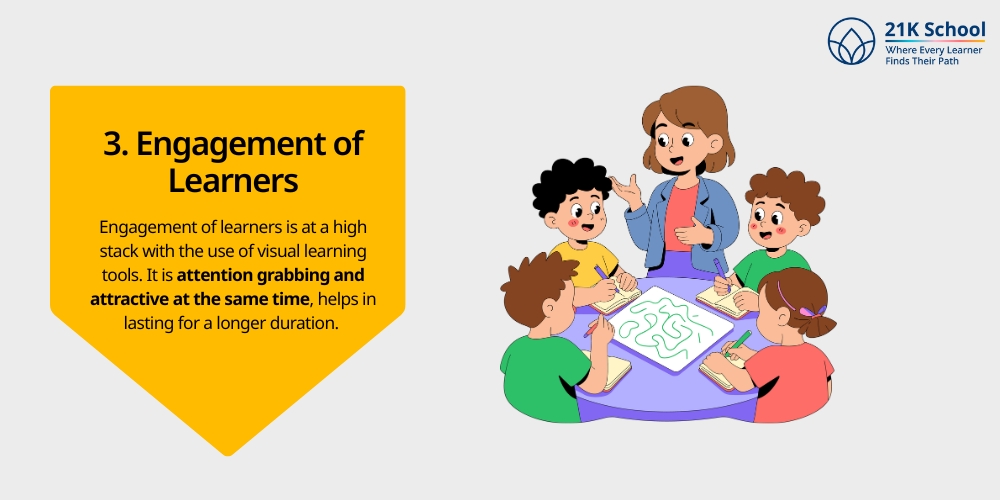
Engagement of learners is at a high stack with the use of visual learning tools. It is attention grabbing and attractive at the same time, helps in lasting for a longer duration.
4. Critical Thinking
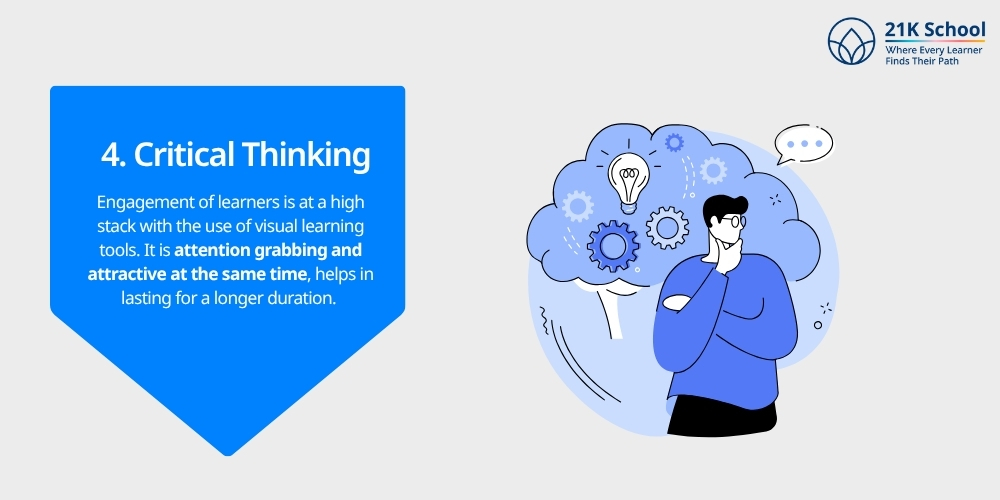
With the help of visual learning tools, students can easily relate and interpret the data and tables taught. It helps mostly in subjects like maths, social science and science.
Learn more about how to develop critical thinking skills in students .
5. Learning Styles
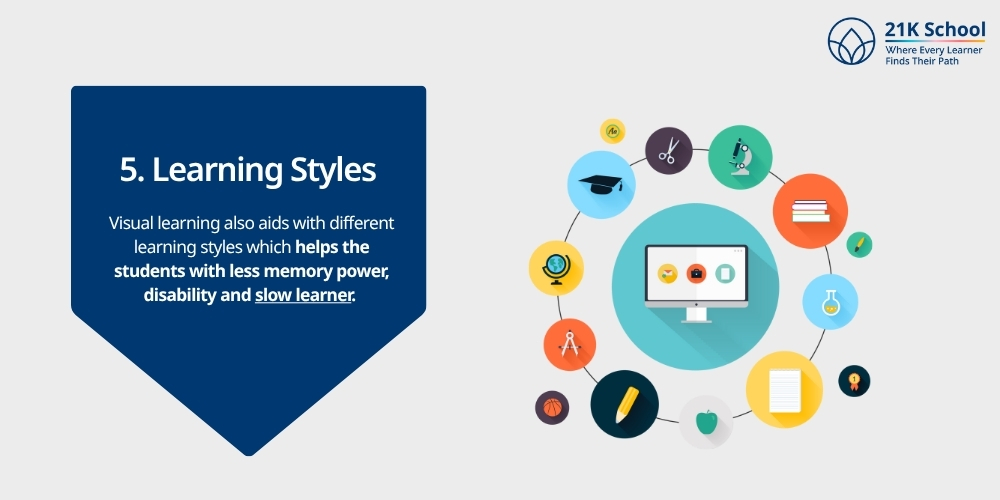
Visual learning also aids with different learning styles which helps the students with less memory power, disability and slow learner. Through presentations and visual aids, subjects and topics are easily accessible to them.
6. Imagination
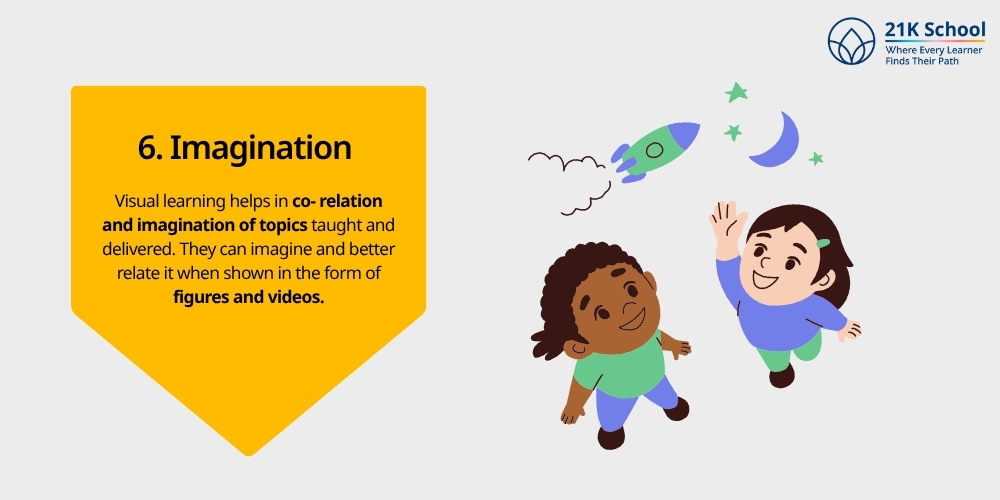
Visual learning helps in co- relation and imagination of topics taught and delivered. They can imagine and better relate it when shown in the form of figures and videos.
Benefits of Visual Learning
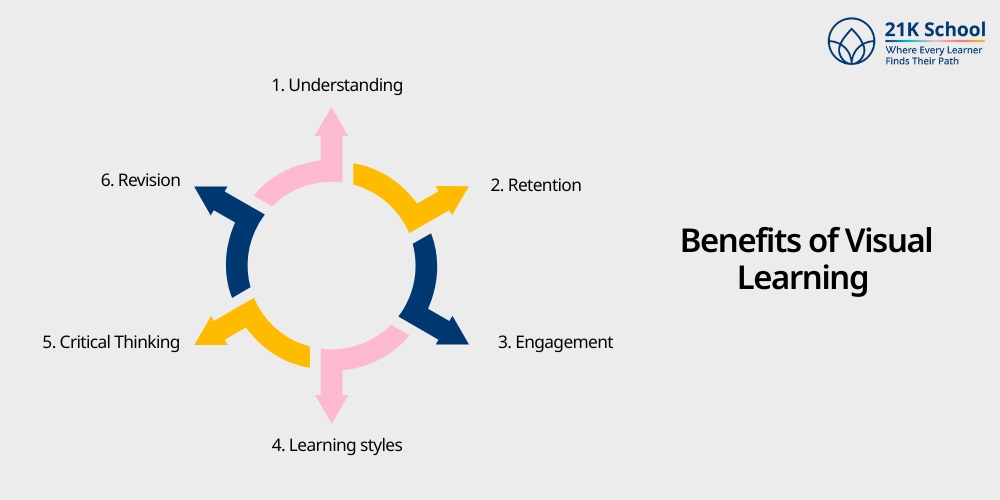
Here are certain benefits of visual learning which aids and encourages students for better participation.
| S.No. | Benefits of visual learning | Explanations | Examples |
| 1. | Increases understanding | Visual learning breaks topics and concepts, which increases understanding of students. | Explanations of wind flow in Physics. |
| 2. | Improves retention power | Visual learning helps in better retention power rather than just text or sound. | Flashcards summary for biology topic, Photosynthesis process. |
| 3. | Boosts engagement | Visual learning boosts student engagement and participation among students. | Videos and animation videos. |
| 4. | Supports learning styles | Visual learning supports different learning styles meant to aid students from all backgrounds. | Students having low memory or disability. |
| 5. | Encourage critical thinking | Visual learning forms such as graphs and charts help students to analyse and interpret data. | Graphs and charts showing comparison or growth or decline over the years. |
| 6. | Helps in revision | Visual learning methods and styles helps students to have a quick overview or revision. | Summary or outline of certain theory or historical details or scientific information. |
You can have a detailed explanation for the benefits of visual learning here.
1. Understanding
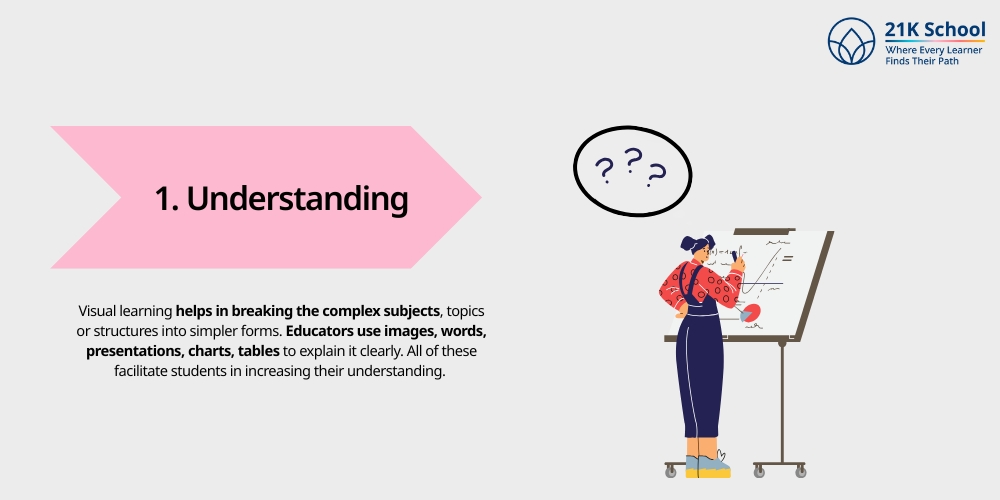
Visual learning helps in breaking the complex subjects, topics or structures into simpler forms. Educators use images, words, presentations, charts, tables to explain it clearly. All of these facilitate students in increasing their understanding.
For example, explaining the concepts of wind flow in Physics. Educators or teachers can use the visual images, charts, etc. to represent better.
2. Retention
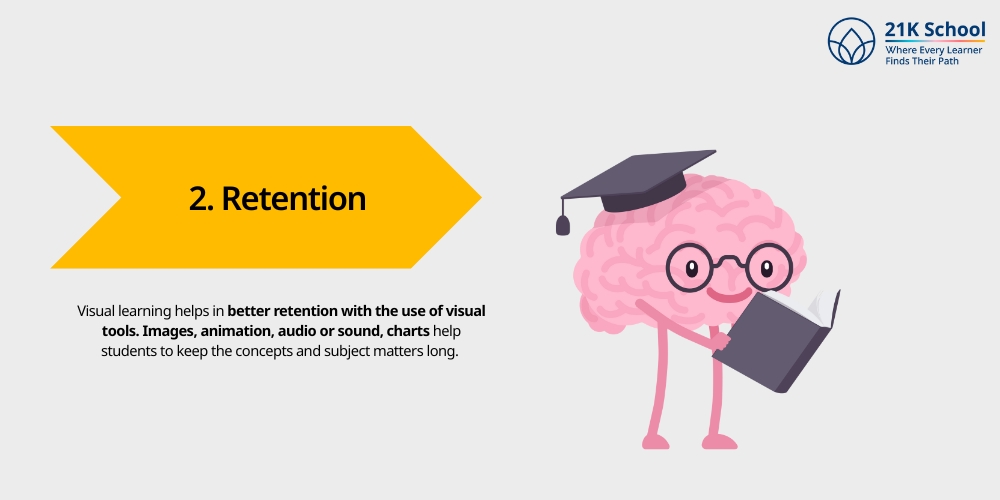
Visual learning helps in better retention with the use of visual tools. Images, animation, audio or sound, charts help students to keep the concepts and subject matters long.
For example, flashcards summary for biology topic- Photosynthesis process. It helps in making students understand better with retention.
3. Engagement
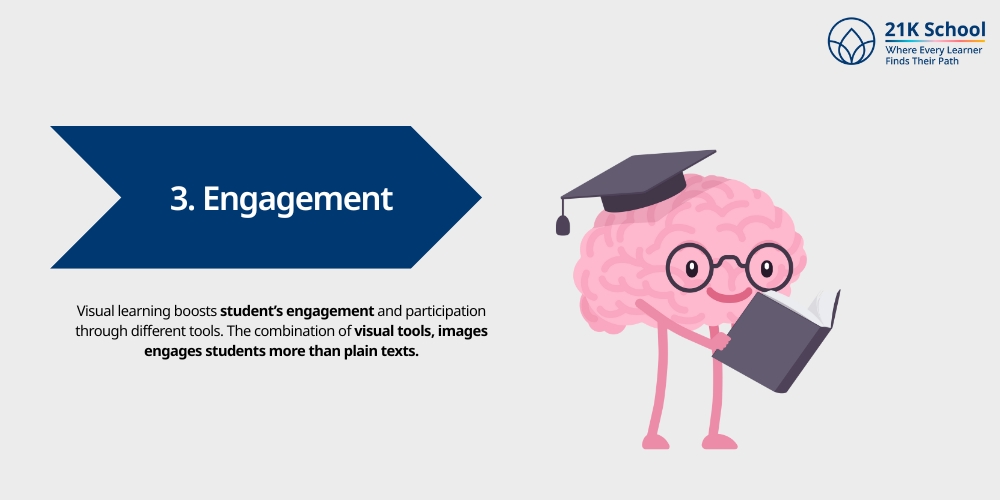
Visual learning boosts student’s engagement and participation through different tools. The combination of visual tools, images engages students more than plain texts.
For example, videos and animation related to a particular chapter or topic engages students in participation.
4. Learning styles
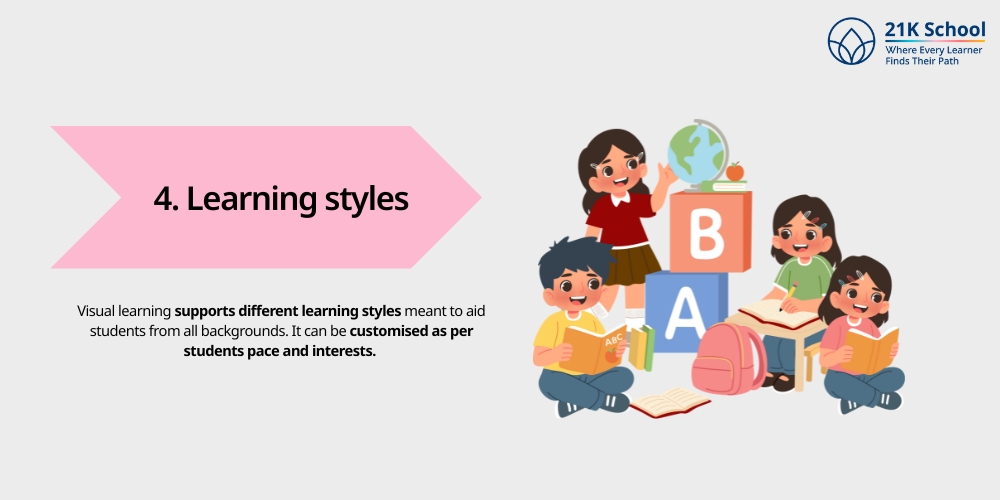
Visual learning supports different learning styles meant to aid students from all backgrounds. It can be customised as per students pace and interests.
Students having low memory or disability can be supported with other tools of learning i.e. visual learning tools.
5. Critical Thinking
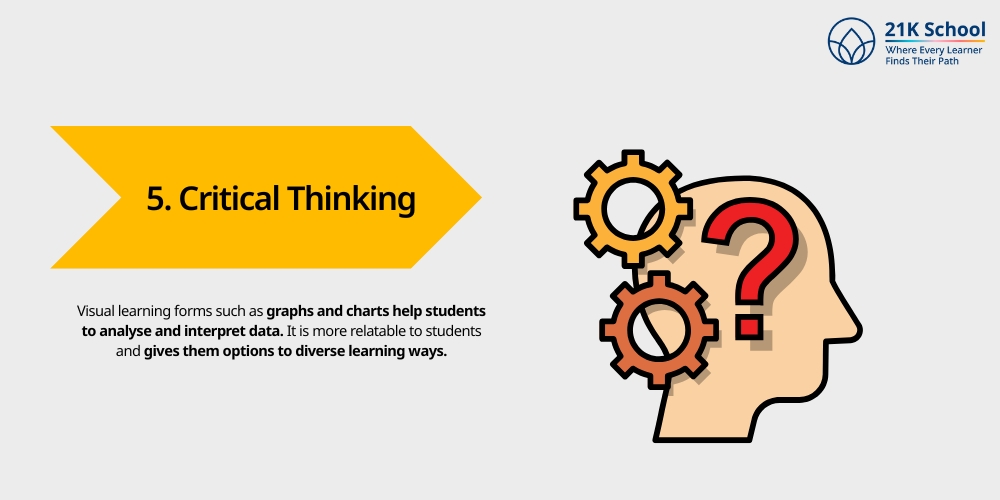
Visual learning forms such as graphs and charts help students to analyse and interpret data. It is more relatable to students and gives them options to diverse learning ways.
For example, graphs and charts showing comparison or growth or decline over the year. Such inclination or decline structure can be well shown with the help of graphs and tables.
6. Revision
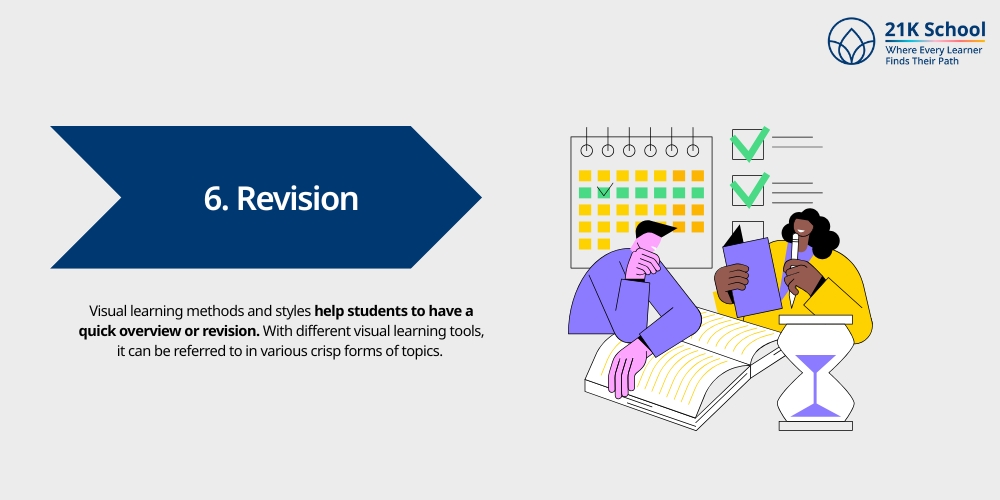
Visual learning methods and styles help students to have a quick overview or revision. With different visual learning tools, it can be referred to in various crisp forms of topics.
For example, summary or outline of certain theory or historical details or scientific information.
Drawbacks of Visual Learning
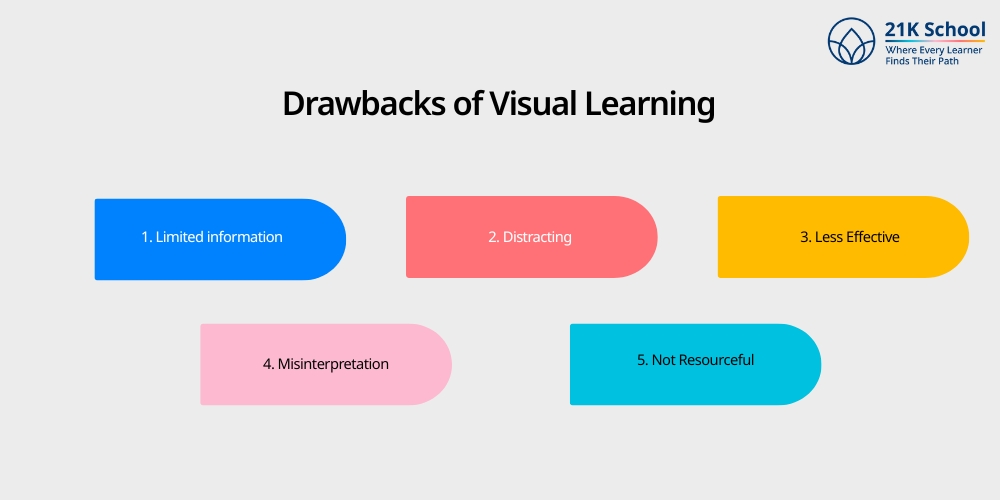
Here are some specific drawbacks of visual learning which can be useful for your understanding and information gathering.
| S.No. | Drawbacks of visual learning | Explanations |
| 1. | Limited information | Visuals can contain limited information or details, which can cause to less sharing of learning materials. |
| 2. | Can be distracting | Attractive and entertaining pictures or images can lead to distraction for students. |
| 3. | Less effective | Visual learning materials can contain less subject details, which require more verbal or non verbal explanations. |
| 4. | Misinterpretation | Some students or learner’s can consider it in other ways due to the lack of detailed information, since they hail from different backgrounds. |
| 5. | Not resourceful | Visuals are not always full of resources or that informative as required. |
Here is the explanation for the drawbacks of visual learning.
1. Limited information
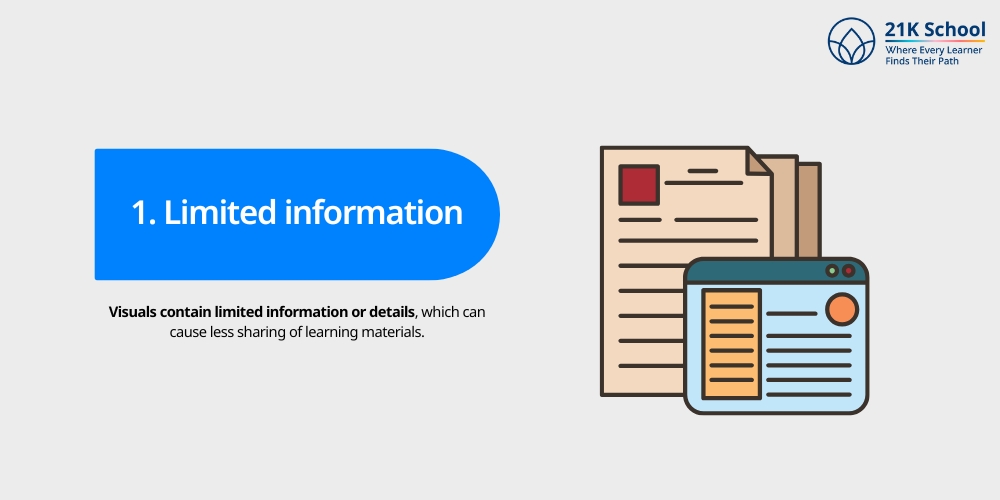
Visuals contain limited information or details, which can cause less sharing of learning materials.
2. Distracting
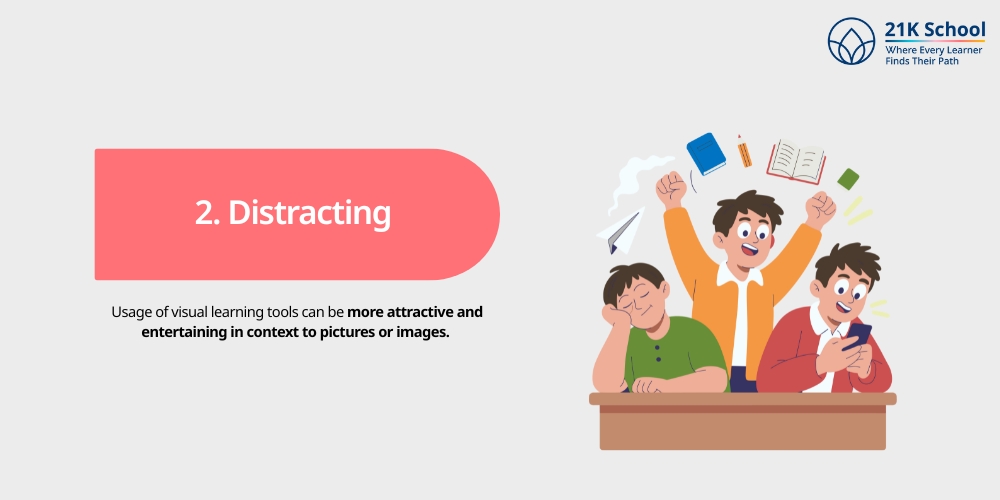
Usage of visual learning tools can be more attractive and entertaining in context to pictures or images. This can lead to distraction for students.
3. Less Effective
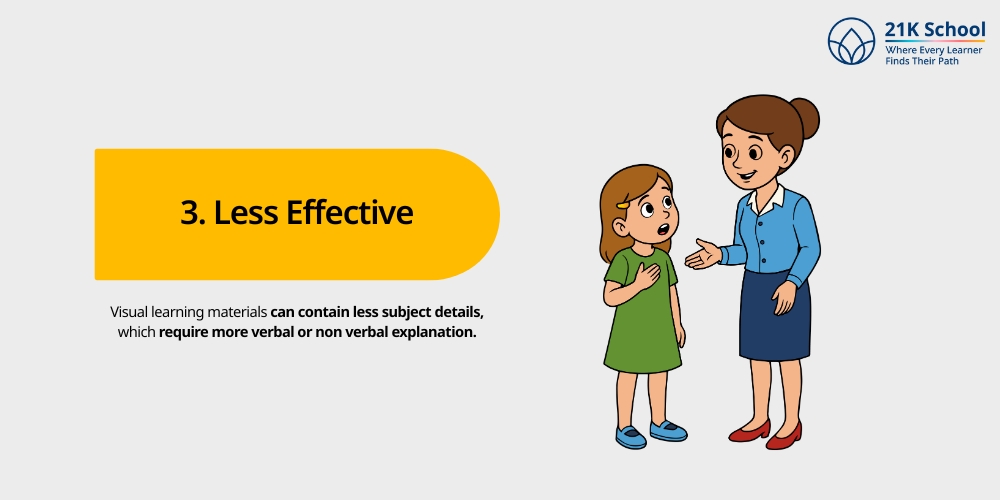
Visual learning materials can contain less subject details, which require more verbal or non verbal explanation.
4. Misinterpretation
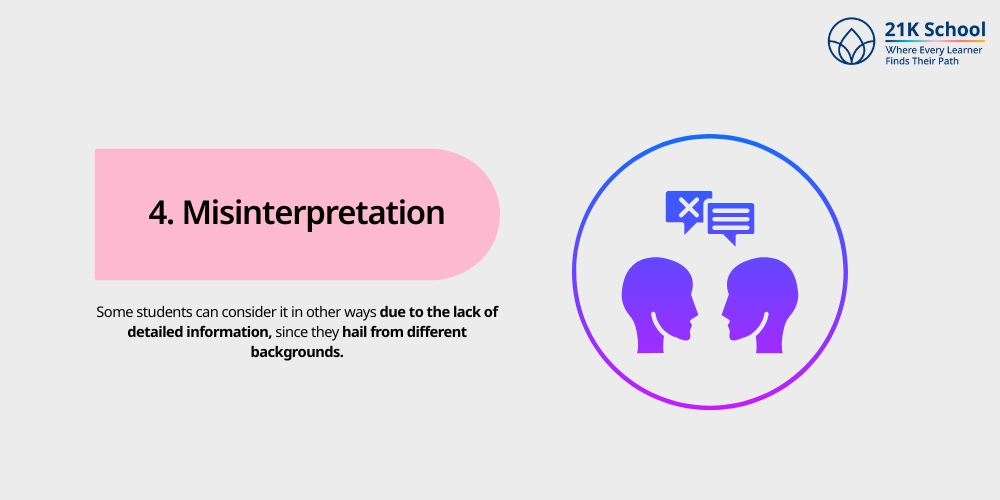
Some students can consider it in other ways due to the lack of detailed information, since they hail from different backgrounds.
5. Not Resourceful
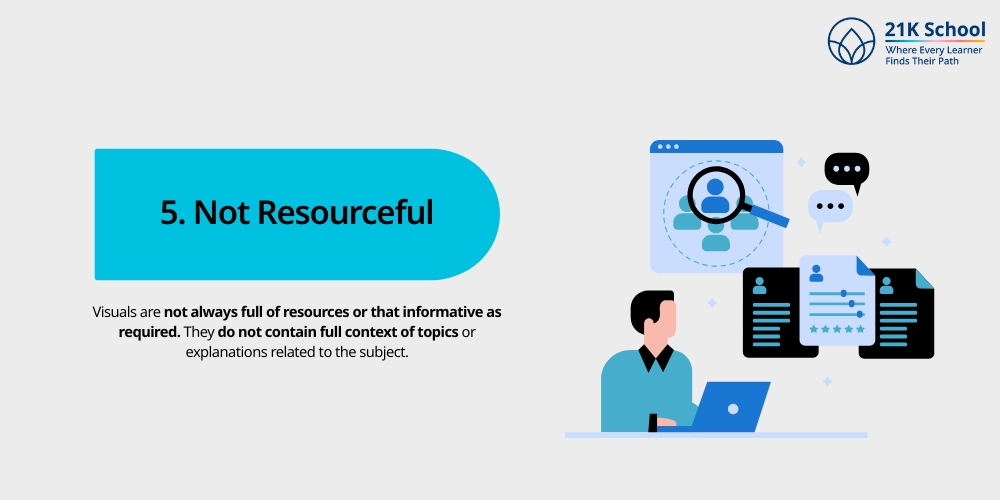
Visuals are not always full of resources or that informative as required. They do not contain full context of topics or explanations related to the subject.
Popular Examples of Visual Learning Tools
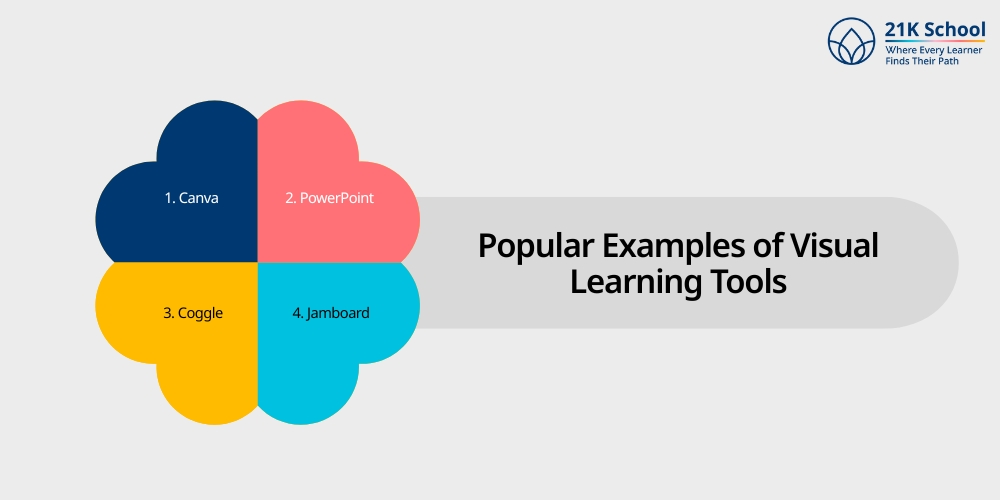
Here are some examples of visual learning tools that eases the learning process and style. It is seen as an enhancement to engagement and participation of students or learners.
1. Canva
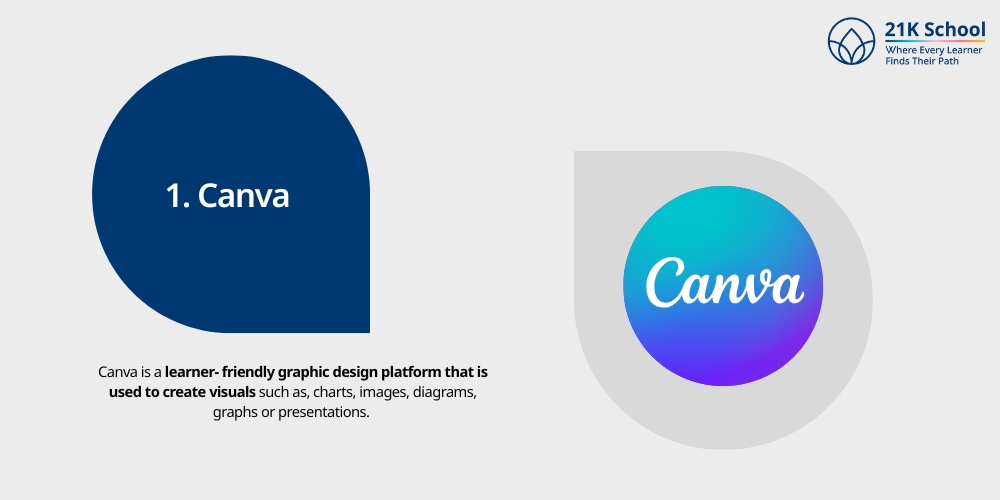
Canva is a learner- friendly graphic design platform that is used to create visuals such as, charts, images, diagrams, graphs or presentations. It is required both in the teaching and learning process.
2. PowerPoint
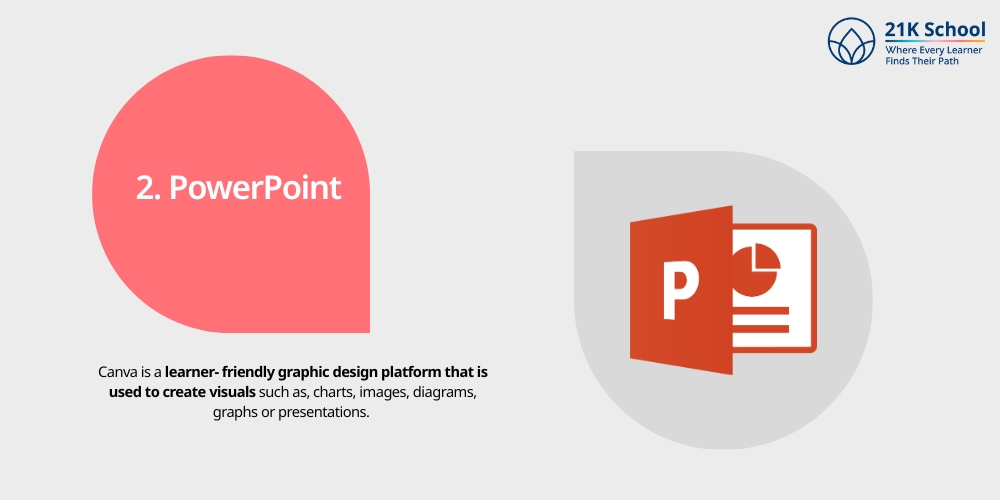
PowerPoint is a visual design software which allows the creation of visual presentations. It has tools which are required for inserting images, pictures, graphs, charts, tables or diagrams.
3. Coggle
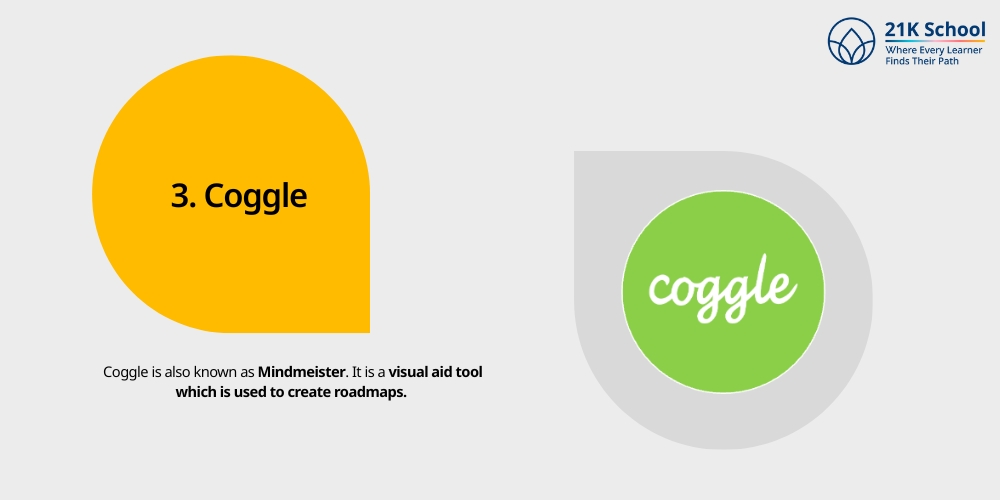
Coggle is also known as Mindmeister. It is a visual aid tool which is used to create roadmaps. Subjects requiring visual based concepts or presentations can opt for this visual learning interactive tool.
Explore different creative mind map ideas for students .
4. Jamboard
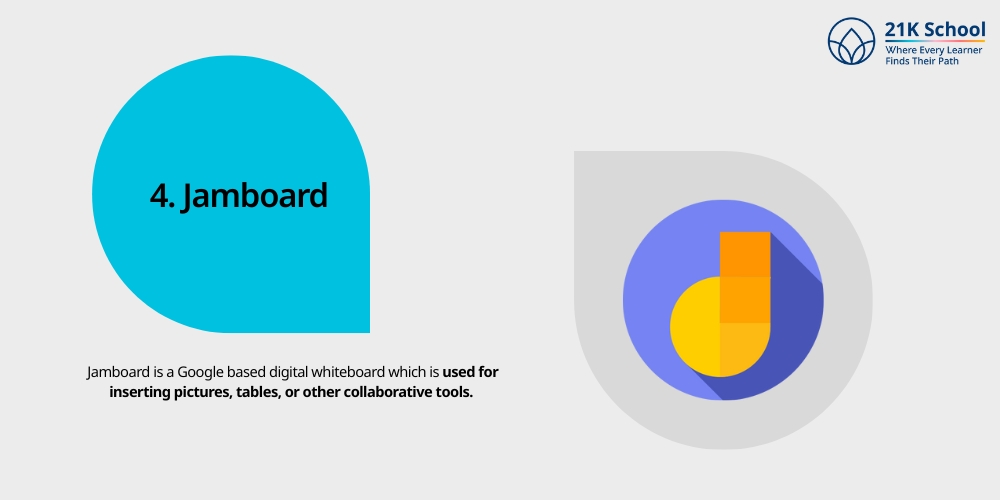
Jamboard is a Google based digital whiteboard which is used for inserting pictures, tables, or other collaborative tools. It is also required for group activities projects.
Verbal vs Visual Learning
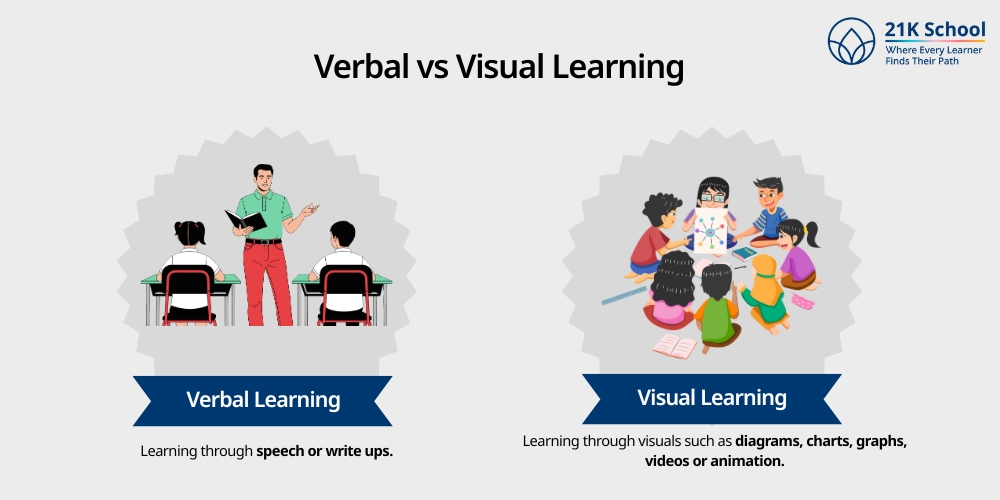
Here are the differences between verbal learning and visual learning, which are usually seen in learning types.
| Basis of distinction | verbal learning | visual learning |
| Meaning | Learning through speech or write ups. | Learning through visuals such as diagrams, charts, graphs, videos or animation. |
| Learning styles | Audio, speech or write ups | Visual aid (can see or observation based) |
| Memory methods | Linguistic | Visual |
| Speed | Slow | Quick |
| Example | Discussions on any topic or subject | Watching presentation, videos or animation. |
Also read: How to improve communication skills for students .
Final Thoughts
In modern education, visual learning is an essential requirement for teaching and learning activities. It is important to bridge the gap between comprehension of concepts or topics and engagement in learning.
Visual learning methods are interactive and students or learner- friendly. It is a valuable tool in skill enhancement which boost effective learning and teaching.
Learner’s from all backgrounds are able to understand and learn from such tools. It is useful for both students and teachers.

